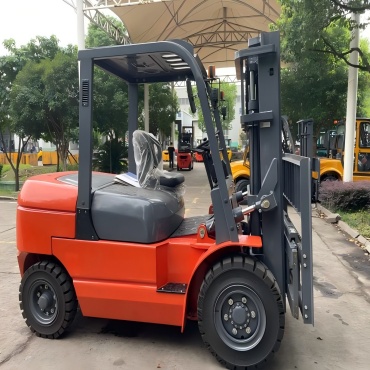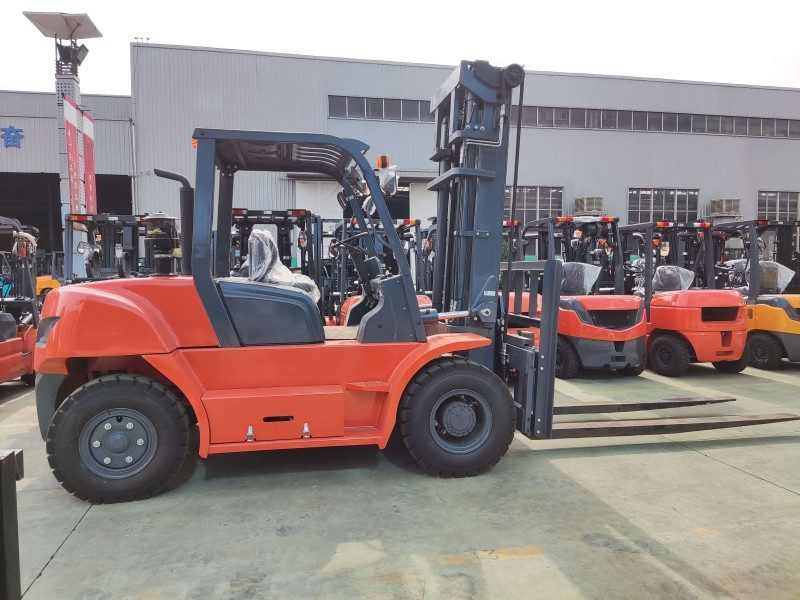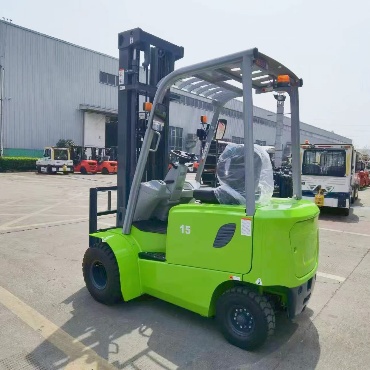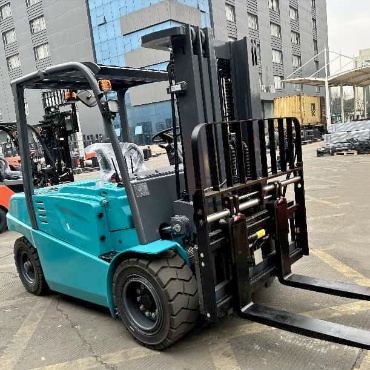- Diesel Forklift
-
- 25-30tonne Diesel Forklift 16T Forklift Truck 4.5 Ton Diesel Forklift 48 Ton Diesel Forklift 3 Ton Diesel Forklift 3.5 Ton Diesel Forklift 2.5 Ton Diesel Forklift 33 Ton Diesel Forklift 15 Ton Diesel Forklift 10 Ton Diesel Forklift 8 Ton Diesel Forklift 4 Ton Diesel Forklift 6Ton Forklift 2 Ton Diesel Forklift 1 Ton Diesel Forklift 1.8 Ton Diesel Forklift 1.5 Ton Diesel Forklift 7 ton forklift 35 ton Forklift Rough Terrain Forklift
- Electric Forklift
-
- Narrow Aisle Stand Up Counterbalance Forklift – High Efficiency Warehouse Solution 3.8ton Low Voltage Lithium Battery Forklift 12t Lithium high capacity forklift 12t large capacity electric forklift 8ton Electric Forklift 10t electric forklift truck 25ton Lithium Battery Forklift 7ton Electric Forklift 16-20t Large Capacity Lithium Battery Forklift 2 Ton Electric Forklift 1.8 Ton Electric Forklift 6 Ton Electric Forklift 1.5 Ton Electric Forklift 1.0-1.5 Ton Electric Forklift 2.5 Ton Electric Forklift 3.5 Ton Electric Forklift 4.0-4.5 Ton Electric Forklift 5 Ton Electric Forklift 3 Ton Electric Forklift 1.6-1.8Ton Three Wheel Electric Forklift 2 Ton three wheel electric forklift
- Rough Terrain Forklift
-
- 3.5t-4ton 4 wheel drive forklift 7 Ton All Rough Terrain Forklift 2-2.5T Rough Terrain Forklift Truck 4 ton off road forklift truck 3t 4 wheel drive forklift for sale 3.5t Two Wheel Drive Rough terrain forklift 3T Diesel Rough Terrain 2WD Forklift FLIFT 3.5ton all rough terrain forklift for sale 2WD 3t off Road Rough Terrain Forklift
- Electric Reach Truck & Pallet Truck / Pallet Stacker
-
- 5ton end rider electric pallet truck with customized 1.8m fork length 10ton-15ton heavy duty electric pallet truck 2.5ton all terrain electric pallet jack 1.5ton-2ton all terrain electric pallet truck with crane jib Counterbalanced Pallet Stacker 1600 lb to 2000 lb Capacity for Indoor Warehouses Heavy Duty 2T-2.5T Electric Stacker Forklift | High-Performance Stacker Lift High-Capacity 2.5t electric reach truck 1.0t -1.5t Electric Walkie Straddle Stacker 2ton Fully Electric Pallet Stacker 3 stage mast 2ton electric rough terrain pallet stacker 1.5ton off road Rough Terrain Stacker 1.8ton walkie Electric Pallet Truck Jack 1.5Ton Electric Pallet Stacker | Durable Walkie Stacker for Easy Material Handling 1200kg walking type electric pallet stacker 2ton roll and reel electric pallet truck Walkie Counterbalanced Stacker 1500–2000kg Capacity Compact Design 1ton outdoor rough terrain counterbalanced pallet stacker 3300lbs Electric off-road pallet stacker 2t Rough Terrain Pallet Truck Powered Pallet Truck with PU Wheels-2000kg Electric Pallet Jack 2t Elecric Hand Truck 1.5 Ton Electric Walkie Pallet Truck – Compact Power for Efficient Material Handling 2 Ton Reach Forklift 1.5 Ton Reach Forklift 2Ton -3Ton Electric Pallet Truck Semi-electric Pallet Stacker 1ton-1.6ton 3 Way Pallet Stacker Multi-Directional Sideloader Forklift 4 direction reach truck
- Customization Forklift
-
- 900kg CDD09B Electric Walking Type Counterweight Stacker Professional Walking Type Electric Stacker with Special Attachment 1ton Electric Outdoor Rough Terrain Telescopic Spreader Stacker 4t QDD40 Seated type Electric Tractor QDD60 Seated Type Fully Electric Tractor 3t QDD30C Electric Tractor with Turning Radius 1545mm 2t CQD20A Electric Simple Type Reach Forklift Truck 1.5t CQD15A Simple Type Electric Reach forklift Truck 5t Convertible Seated Electric Flat Truck 3t CBD30Z Electric Vehicle Transfer Truck 1.5t CDD15Y Electric Pallet Stacker (Rough Terrain) 1t CXD10-45 Electric High Lift-Order Picker 2t CQD20S-60 Four-way Walking Type Reach Forklift Truck CDD10A/15A Walking Type Fully Electric Pallet Stacker 3t QDD30A Standing Type Electric Tractor 1t CSD10 Man Mount Three-way Stacker 1.5t AGV type CDD15J-16 Electric Pallet Stacker CBD80 8t Electric Pallet Stacker 6t CBD60 Electric Pallet Stacker CBD120 1.2t Electric Pallet Stacker 2t CDD20D-30 Walking type Electric Pallet Staccker CDD08B-25 Counterweight Electric Pallet Stacker
- Forklift Attachements
-
- Waste Paper Fixture Fixed Short Arm non-sideshifting non-sideshifting Fixed Short Arm non-sideshifting Non-sideshifting Hinged Forks Caton Clamp Rotator non-Sideshifting Tire Clamps Pusher Turning Fork Clamps non-sideshifting Log Holder Sideshifting Broke Paper Clamps Sideshifting Sideshifting Single Load Stabilizer Fork Positioners Single Double Pallet Handler
Some Knowledge About Hydraulic Cylinders
Date: 2023-06-05 View:
A hydraulic cylinder is a hydraulic actuator that converts hydraulic energy
into mechanical energy and does linear reciprocating motion (or swinging motion).
It has a simple structure and works reliably. When used to implement reciprocating motion,
it can eliminate deceleration devices, there is no transmission gap, and the motion is stable,
so it is widely used in hydraulic systems for a variety of machinery.
.png)
1.Composition of the hydraulic cylinder
Hydraulic cylinders are usually composed of the main components
such as the rear end cover, cylinder barrel, piston rod, piston assembly, front end cover, etc.;
In order to prevent the oil from leaking to the outside of the hydraulic cylinder
or leaking from the high-pressure cavity to the low-pressure cavity,
a sealing device is provided between the cylinder barrel and the end cover,
the piston and the piston in vain, the piston and the cylinder barrel, the piston rod and the front end cover,
and the dust prevention device is also installed on the outside of the front cover:
in order to prevent the piston from hitting the cylinder head when quickly retreating to the stroke terminal,
the end of the hydraulic cylinder is also provided with a buffer device; Sometimes an exhaust is also required.


2.Hydraulic cylinders are classified by structure

Piston-type hydraulic cylinder
A single piston-rod hydraulic cylinder has a piston rod at only one end.
Its two ends, the inlet and outlet oil ports AB,
can pass pressure oil or return oil for bidirectional motion, hence the name dual-acting cylinder.
(1).png)
Telescopic hydraulic cylinder
With two or more stages of pistons, the sequence of piston extensions
in a telescopic hydraulic cylinder is from largest to smallest,
and the sequence of no-load retraction is generally from smallest to largest.
Telescopic cylinders enable long strokes, while they are shorter in length and more compact when retracted.
Hydraulic cylinders of this type are commonly used in construction machinery and agricultural machinery.

3. Internal design of the hydraulic cylinder
Design purpose: Based on the operating temperature of the site,
the working medium and the processing situation of the plant.
The dimensions of the internal structure are calculated based on the mechanical design manual.
►The seal must be chosen based on the on-site operating temperature,
environmental contamination, and the working medium.
►The cylinder head is sealed as much as possible with a V combination seal,
which compensates for errors in the finish of the grooves.
►The dimensions of the sealing grooves are designed strictly according to the design manual.
►The cylinder piston seals generally use a Glei ring plus a guide band,
which is better for high temperature resistance and pollution resistance.

4. Common problems and maintenance of the hydraulic cylinders
►Oil leakage from the sealing part of the hydraulic cylinder liner and the cylinder head
(or guide sleeve) (solution: replace the new O-ring);
►The piston rod and the guide sleeve are relative to the movement of the oil leakage outward
(solution: if the piston rod is damaged, it can be cleaned with gasoline, and after drying,
it is applied to the damaged place with metal glue, and then the piston rod oil seal
is used to move back and forth on the piston rod to scrape off the excess glue,
and then put into use after the glue is completely cured. If the guide sleeve is worn,
a guide sleeve with a slightly smaller inner diameter can be processed to replace it).
►Oil leakage caused by poor sealing of hydraulic cylinder pipe joints
(solution: in addition to checking the sealing of the sealing ring, it should also be checked whether the joint is properly assembled,
whether it is reliably tightened and whether there are scars on the contact surface, etc. and replace or repair if necessary)

.png)




